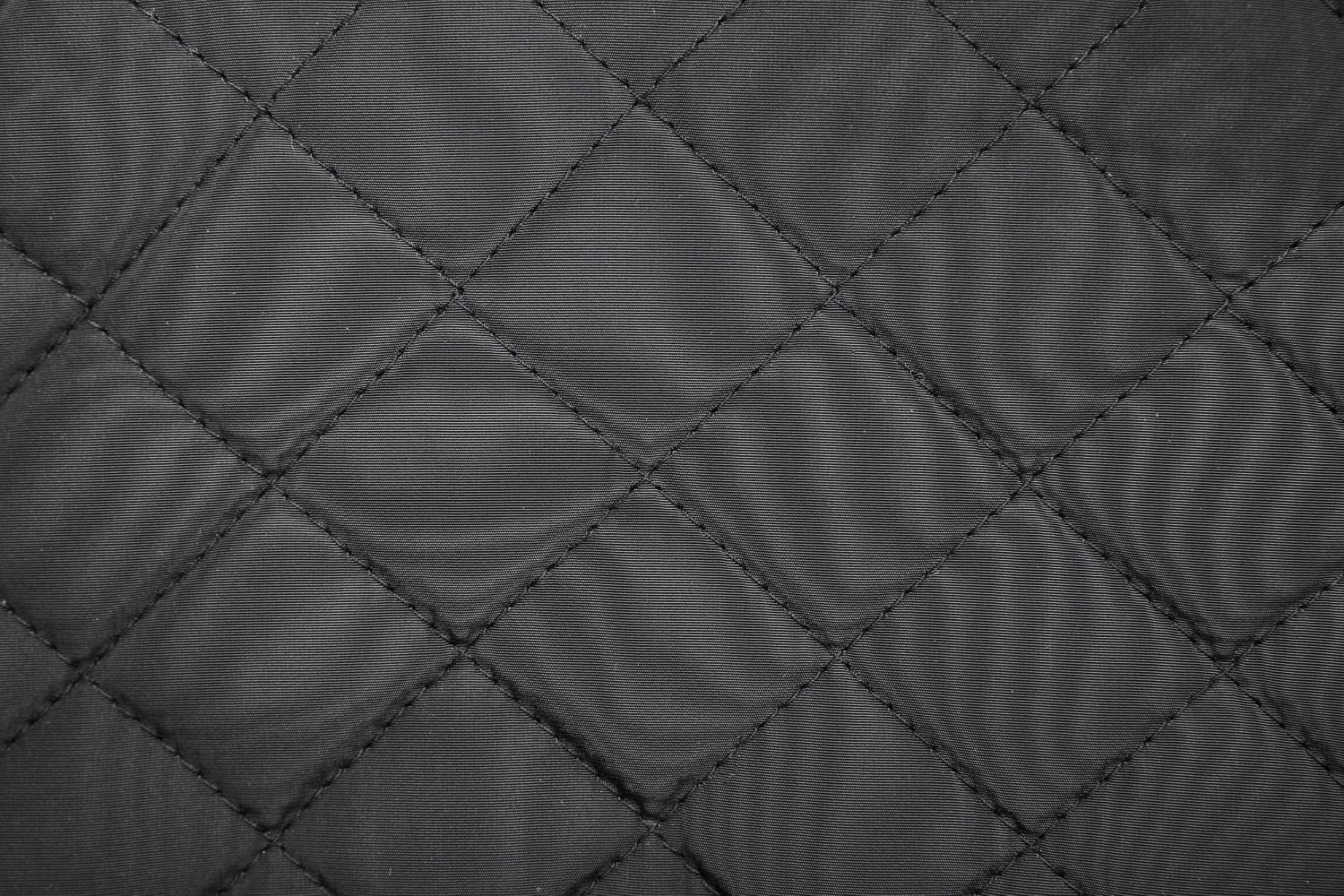Designer quilting: when fabric becomes sculpture
Quilted fabrics represent a highly valued choice in the world of haute couture, combining aesthetics, structure and functionality. This article explores their characteristics, creative uses and craft techniques that make them undisputed protagonists of contemporary sartorial elegance.
Comfort, volume and sophistication
Created by combining two or more layers of fabric with an inner padding, quilted fabrics are known for their ability to add thickness and three-dimensionality to garments. This structure not only adds a distinctive visual component, but also provides superior comfort and durability. The final effect can range from regular geometries, such as classic diamond or squares, to more complex and customized patterns, perfect for maisons that wish to stand out.
A high-impact design element
Today, quilted fabrics are no longer relegated to outerwear alone. They are used in skirts, tops, accessories and even footwear, becoming stylistic protagonists rather than mere technical details. The interplay between stiffness and softness makes it possible to create architectural or soft silhouettes, depending on design needs. The addition of innovative materials and ongoing research in textiles are further expanding the expressive possibilities.

Handcrafted techniques and experimentation
The value of quilted fabrics also lies in the variety of techniques that can be used. In addition to mechanical stitching, alternative decorative methods are being explored, such as hot “embossing” or integrated embroidery. In particular, quilted embroidery and matellassé can be combined with elements of traditional couture to achieve sophisticated and dynamic effects that maintain a strong link to craftsmanship.
Dialogue between tradition and innovation
In a context where sustainability and production efficiency are becoming central, quilted fabrics lend themselves perfectly to a dialogue between artisanal heritage and technological innovation. The adoption of recycled or biodegradable materials for padding and the use of digital machinery for pattern definition allows precise control of the aesthetic result, without sacrificing the authenticity of handwork.
Versatility and customization
One of the greatest strengths is versatility. Fashion houses can choose from an infinite number of options in terms of textures, weights, colors and patterns. Quilting thus becomes a tool of stylistic identity, capable of reflecting the brand's DNA. In some cases, the combination with techniques such as lace-effect embroidery or three-dimensional appliqués allows new forms of textural storytelling to be explored.
Applications in haute couture and ready-to-wear
While the haute couture runways show spectacular examples of the use of quilted fabrics, with sculptural silhouettes and precious details, ready-to-wear also benefits from this technique to give character and uniqueness to garments. Bomber jackets, vests, pants, and even handbags are being reinterpreted through tailored quilting, demonstrating the extraordinary adaptability of the medium.
Quilted fabrics in the future of fashion
Current trends are pushing toward a tactile and multisensory aesthetic, and in this context quilted fabrics find a privileged space. This is not only a return to authenticity, but also a step into the future of fashion design, where the material becomes a vehicle for emotion and narrative. The use of advanced technologies such as engraving and laser cutting on quilted surfaces opens the way to new experiments, giving rise to plays of light and transparency unthinkable with traditional techniques.
Conclusion
With their ability to combine aesthetics, functionality and innovation, quilted fabrics are destined to occupy an increasingly prominent place in high fashion collections. They offer an ideal canvas for expressing creativity and savoir-faire, and represent a perfect synthesis of past and future.